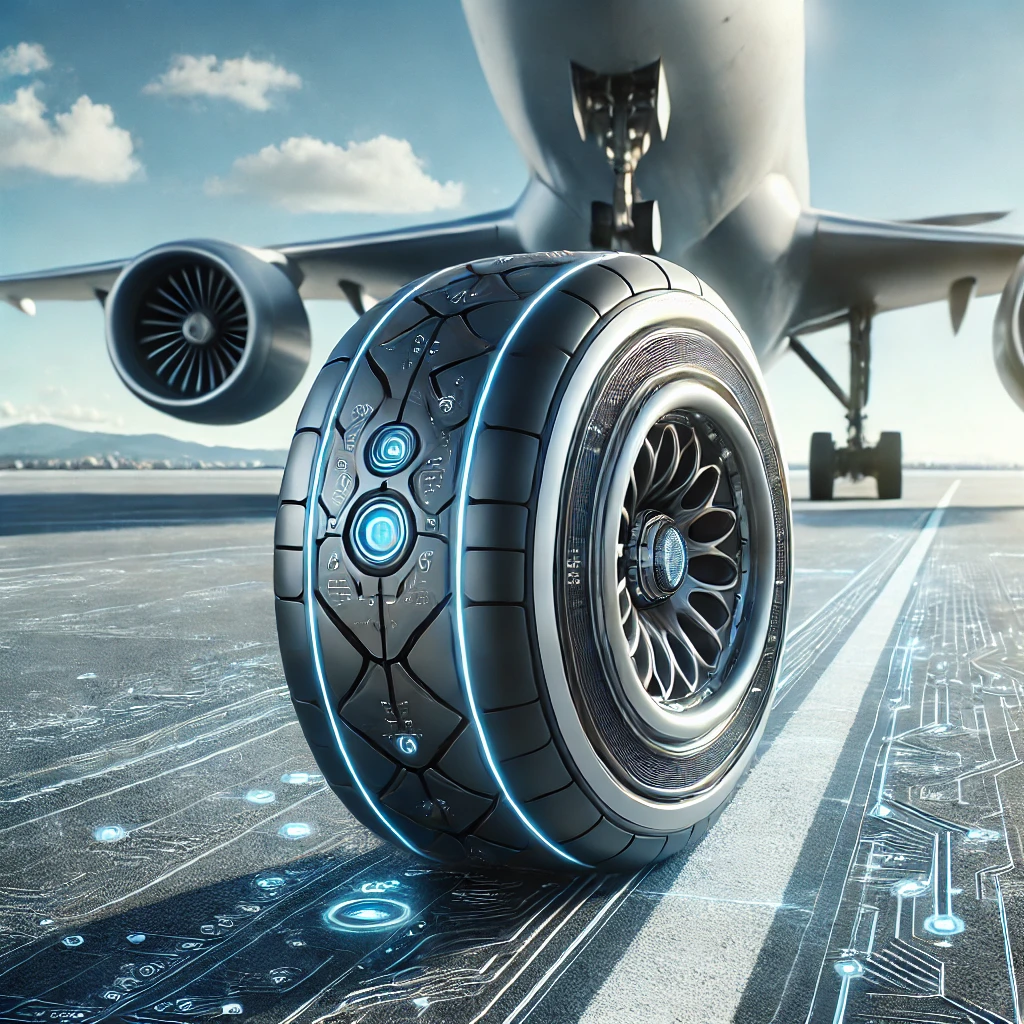Airplane tires play a crucial role in flight safety and performance. They must withstand high speeds, heavy landings, and extreme weather conditions. Thanks to new technology, synthetic rubber tires are making airplanes safer, more efficient, and more environmentally friendly.
In this blog, we’ll explore what synthetic rubber airplane tires are, why they’re better than traditional rubber tires, and how they are shaping the future of aviation.
What is Synthetic Rubber?
For many years, airplane tires were made from natural rubber combined with strong materials like Kevlar and carbon black. However, synthetic rubber is now becoming the preferred choice because it lasts longer, is more flexible, and performs better under extreme conditions.
Unlike natural rubber, synthetic rubber is engineered using chemical processes to enhance its properties. This makes it stronger, more durable, and capable of handling the high pressures and intense friction that airplane tires endure. Additionally, manufacturers can design synthetic rubber with specialized tread patterns to improve grip and prevent overheating.
Why Are Synthetic Rubber Tires Better?
1. Longer Lifespan and Cost Savings
One of the biggest advantages of synthetic rubber tires is their extended lifespan. Because they are more resistant to wear and tear, airlines don’t have to replace them as frequently. This reduces maintenance costs and improves efficiency for airlines.
2. Reliable Performance in All Weather Conditions
Airplane tires must function in extreme weather, from scorching hot runways to freezing cold temperatures. Synthetic rubber is designed to withstand these tough conditions. Whether landing in a desert or on an icy runway, these tires remain strong and reliable.
3. Improved Fuel Efficiency
Synthetic rubber tires create less friction with the runway, which means airplanes require less energy to move. This leads to better fuel efficiency, helping airlines save money while also reducing carbon emissions.
4. Better Grip for Safer Landings
Safety is a top priority in aviation. Synthetic rubber tires provide superior traction, reducing the risk of skidding. They also allow airplanes to stop faster and more smoothly, even on wet or slippery runways.
5. More Environmentally Friendly
The production of natural rubber can contribute to deforestation and environmental damage. In contrast, synthetic rubber can be produced more sustainably. Some companies are even developing plant-based and recycled synthetic rubber to make tires even more eco-friendly.
Exciting Innovations in Synthetic Rubber Tires
Scientists and engineers are constantly improving airplane tires. Here are some of the latest innovations:
- Nanotechnology: Tiny materials are added to synthetic rubber to increase its strength and resistance to damage.
- Self-Healing Rubber: Researchers are developing rubber that can repair small cracks on its own, extending tire lifespan.
- Lightweight Materials: Mixing synthetic rubber with new lightweight materials helps reduce airplane weight, improving fuel efficiency.
- Recyclable Tires: Some synthetic rubber tires are now easier to recycle, reducing waste and environmental impact.
- Smart Sensors: New airplane tires feature built-in sensors that track pressure, temperature, and wear in real-time. This helps airlines detect potential issues before they become serious problems.
Leading Companies in Synthetic Rubber Tire Development
Several major companies are leading the way in synthetic rubber airplane tire innovation. Here are some of the key players:
- Michelin: Developing high-performance, long-lasting synthetic rubber tires.
- Bridgestone: Investing in more sustainable materials and enhancing tire durability.
- Goodyear: Advancing smart tire technology with sensors to track and improve performance.
These companies are investing heavily in research and development to improve safety, efficiency, and sustainability in aviation.
The Future of Airplane Tires
As air travel continues to grow, the need for better and more efficient tires will only increase. Here are some key trends to watch for in the future:
- AI and Predictive Maintenance: Airlines will use artificial intelligence to predict when tires need to be replaced, improving safety and reducing maintenance costs.
- 3D-Printed Tires: Custom-made tire parts could be printed quickly and efficiently, reducing production costs.
- More Sustainable Materials: Scientists are working on plant-based synthetic rubber to further reduce aviation’s environmental impact.
- Advanced Hybrid Rubber: Mixing natural and synthetic rubber to create even stronger and more reliable tires.
- Adaptive Tire Technology: Future tires may be able to adjust their grip based on runway conditions, improving safety and performance.
Synthetic rubber airplane tires are revolutionizing the aviation industry. They last longer, enhance safety, improve fuel efficiency, and are better for the environment. With ongoing technological advancements, these tires will continue to play a vital role in the future of aviation.
As more airlines adopt synthetic rubber tires, they will benefit from reduced costs, lower emissions, and safer flights. The future of airplane tires is bright, and we can expect even more exciting innovations in the years ahead.

